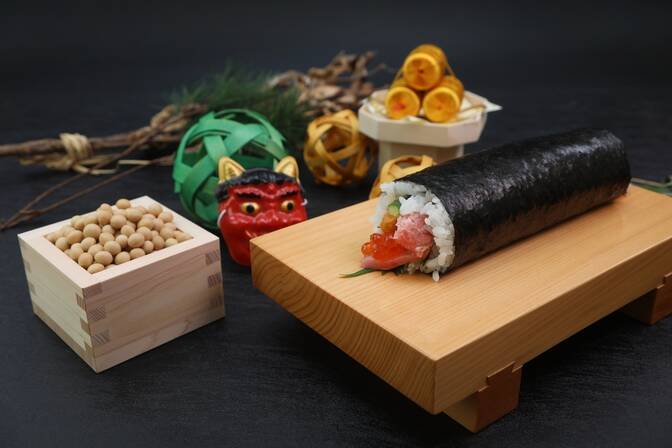Setsubun
2. Februar, Sonntag

Geschichte und Bedeutung
Die Ursprünge von Setsubun gehen auf alte chinesische und japanische Traditionen zurück, in denen der Übergang vom Winter zum Frühling gefeiert und Rituale zur Reinigung und Vertreibung böser Geister durchgeführt wurden. Es wird angenommen, dass mit Beginn des Frühlings, wenn die Natur erwacht, auch die Aktivität verschiedener böser Mächte zunimmt. Mamemaki hilft, das Zuhause und das Familienleben zu „reinigen“, indem es Negativität vertreibt und vor Problemen und Krankheiten schützt.
Feiertagstraditionen
Mamemaki. Das Hauptritual ist das Verstreuen gerösteter Sojabohnen. Der Besitzer des Hauses oder das Familienoberhaupt, das eine Dämonenmaske (oni) trägt, ruft: „Oni wa soto! Fuku wa uchi!“ - „Dämon, geh weg! Glück, komm rein!“ Danach wählen die Familienmitglieder eine ihrem Alter entsprechende Menge Bohnen aus, um sie symbolisch zu essen und ihre Gesundheit das ganze Jahr über zu verbessern.
Ehomaki. In letzter Zeit erfreut sich ein weiterer Brauch immer größerer Beliebtheit: das Essen langer Sushi-Rollen namens Ehomaki. Diese Brötchen werden mit Blick auf eine bestimmte Richtung gegessen, die von Astrologen für das laufende Jahr angegeben wurde, und in völliger Stille werden Wünsche für die Zukunft geäußert.
Besuch von Tempeln und Heiligtümern. Große Tempel und Schreine in Japan veranstalten öffentliche Mamemaki-Zeremonien, bei denen eingeladene Prominente, Sportler und örtliche Priester die Bohnen an große Menschenmengen verteilen.
Setsubun in anderen Jahren
- 2022 3. Februar, Donnerstag
- 2023 3. Februar, Freitag
- 2024 3. Februar, Samstag
- 2026 3. Februar, Dienstag
